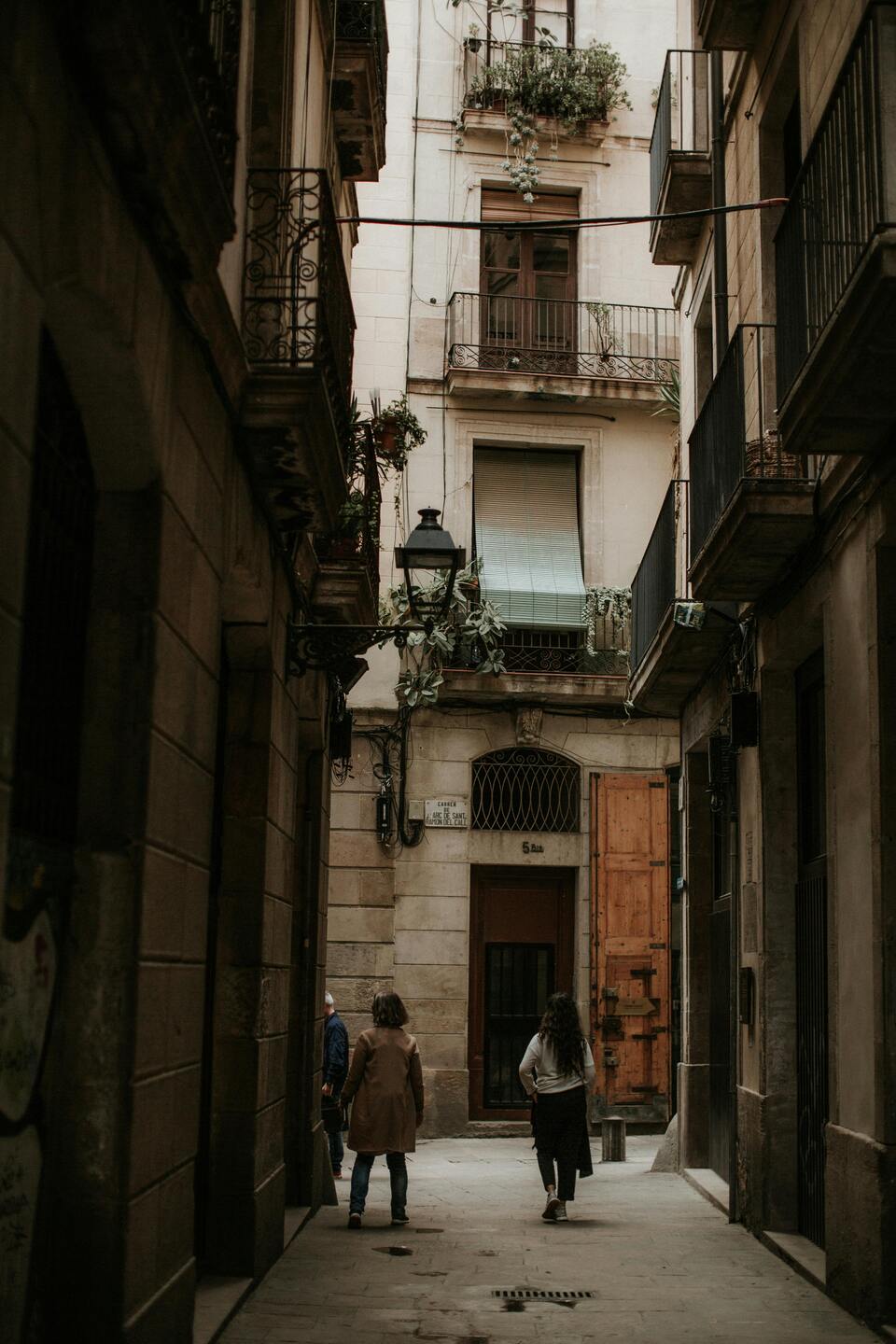Barcelona was once surrounded by a mighty wall, just like Berlin. Its remnants still exist, if you know where to look. Discover the city’s hidden past.
When we think of walled cities, places like Dubrovnik or Berlin come to mind. But Barcelona, too, once had a formidable wall that shaped the way people lived, worked, and moved through the city. The history of Barcelona’s walls spans centuries and civilizations, from Roman origins to medieval fortifications.
Roman Foundations: The Birth of Barcino
Barcelona began as a Roman colony called Barcino, founded around 15 BC. To protect this strategic settlement, the Romans built a wall in the 3rd century that enclosed a small area—roughly where the current Gothic Quarter lies. This original wall, built with large stone blocks, had 74 towers and was around 1.5 kilometers long.
Fragments of this wall still exist today, visible near the Cathedral and around Plaça Nova. In fact, the semicircular towers flanking the entrance to Carrer del Bisbe are Roman, giving us a direct connection to the city’s ancient past.
The Medieval Expansion: A Growing City
As Barcelona grew in the 13th and 14th centuries, so did its need for protection. A second set of walls was built, expanding the fortified area to include much of what is now El Raval. These walls had a more irregular shape, adapted to the landscape and needs of a medieval city.
With gates like Portal de l’Àngel and Portal de Sant Antoni, these new defenses allowed for better trade control, customs enforcement, and even defense from pirates and foreign invaders. Life within the walls was tightly regulated, and curfews were enforced after nightfall.
Where Can You See the Wall Today?
Many remnants of Barcelona’s walls are still visible—if you know where to look:
• Plaça Nova: The twin towers beside the Cathedral are part of the Roman wall.
• Carrer de la Tapineria: A well-preserved section of medieval wall embedded in the modern city.
• MUHBA (Barcelona History Museum): Inside the museum and its underground passages, you can walk along parts of the Roman wall.
• Carrer del Sots-Tinent Navarro: An overlooked area behind La Rambla where you can see a tall stretch of medieval wall.
Curiosities and Little-Known Facts
• Stones from ancient Roman temples were reused in building the walls.
• Napoleon’s troops breached the walls during the Peninsular War.
• The walls kept the city cramped, leading to overcrowding and poor sanitation.
• In the 19th century, as modern urban planning took hold, the walls were gradually demolished.
Why Were the Walls Removed?
In 1854, the Spanish government finally authorized the demolition of the city walls to allow for expansion. This led to the creation of the Eixample district, designed by Ildefons Cerdà. His grid-like plan opened Barcelona to fresh air, green space, and broader avenues—revolutionizing the city’s identity.
A Walking Route Through Time
For those interested in walking Barcelona’s wall history, start at Plaça de l’Àngel and follow these stops:
1. Plaça Nova (Roman towers)
2. Carrer del Bisbe (wall fragments and inscriptions)
3. Carrer de la Tapineria
4. MUHBA entrance
5. Carrer del Sots-Tinent Navarro (medieval wall)
This route blends historical insight with architectural beauty and provides a whole new way to see the city.
Barcelona’s old walls may be hidden beneath modern life, but their legacy lives on in the city’s structure, street names, and urban flow. They remind us that cities are living entities—shaped by necessity, conflict, and reinvention.
Want to dive deeper into the hidden history of Barcelona? Keep following HiBCN for more stories you won’t find in your average guidebook.




